Christmas wreaths. They are decorating numerous doorways all over Rye and help to make our town’s Christmas beautiful. These pictures taken over the last week show wonderful, creative examples to inspire you. Many are home-made, and include greenery, scented dried fruits, and even local seashells.
But where does the tradition of Christmas wreaths come from?
In ancient Greece, garlands began to be used to symbolise victory and success. Winning athletes were crowned with laurel wreaths and would hang these on their walls afterwards. Using evergreen branches to symbolise eternal life goes even further back in time – to Egypt and ancient China.
Across northern Europe, winter greenery as decoration is connected with the pagan holiday of Yule, marking the winter solstice. This 12-day festival, which was also called midwinter, was held to celebrate the returning of the sun and the seasonal cycle. In the harshness of cold winters, evergreen branches helped to remind people of renewal and survival.
With Christianity, the symbolism of wreaths was adapted into a Christmas tradition. Pruned branches of evergreen trees began to be used to decorate Christian homes from as early as the 16th century. The use of wreaths during Yule became a custom in the form of Advent wreaths. Woven into the evergreen wreaths were other items of symbolism: holly (good luck), ivy (faith, fidelity, loyalty), mistletoe (love and fertility), oak leaves (strength and protection), rosemary (love, faith, fidelity), bay (wisdom, strength), rosehips (spiritualism, love) and crab apples (marriage, fertility).
The red berries and the thorny leaves of the holly also represented the crown of thorns worn by Jesus and his red drops of blood. When Prince Albert married Queen Victoria, he brought with him to England this European tradition of greenery at Christmas – both door wreaths and Christmas trees. The word “wreath” comes from the Old English “writhan,” meaning “to twist.”
People have used their front doors as a way of identification and decoration for centuries. In England, it wasn’t until the early 1700s when the numbering of houses became a common way of identifying who lived where, partly to make postal delivery much easier. Before this, property had names, or other kinds of identification.
Mermaid Street is still famous for its particular house names, instead of a numbered system. In London, elaborate leaded fan-lights above doorways, for example, were ways to identify who lived where. People often sent correspondence to people with their own unique fan-light design as the letterhead.
Image Credits: Abigail Cooper-Hansen .



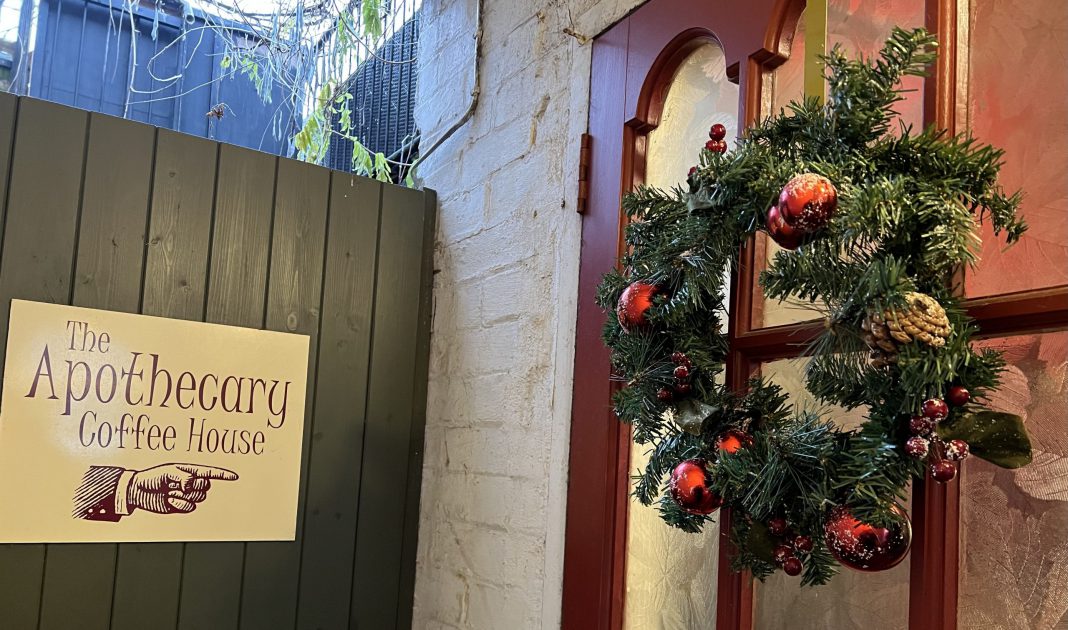
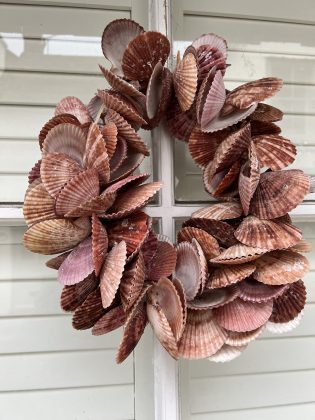
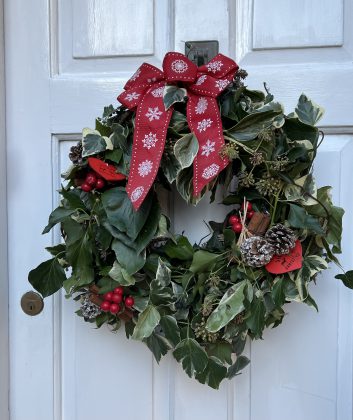
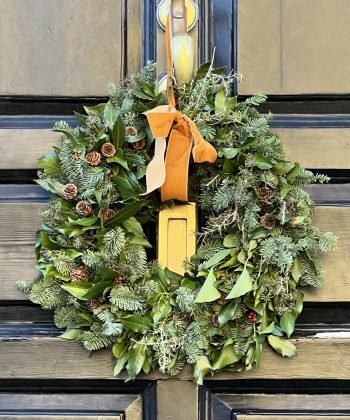
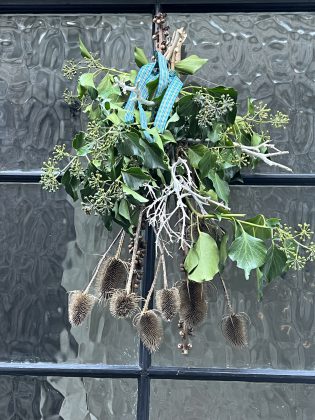
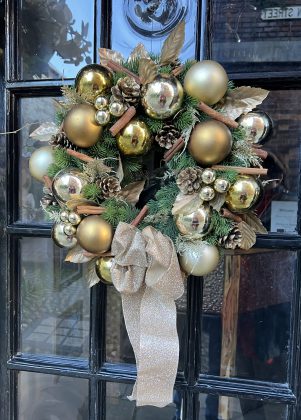

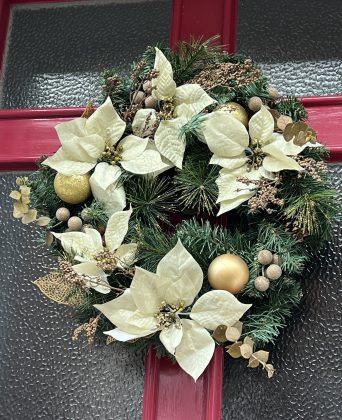
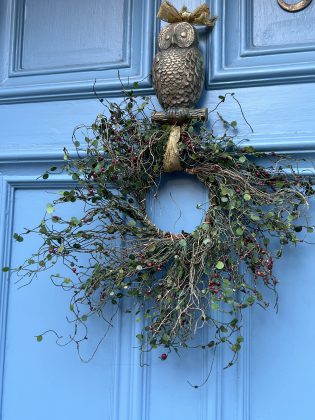
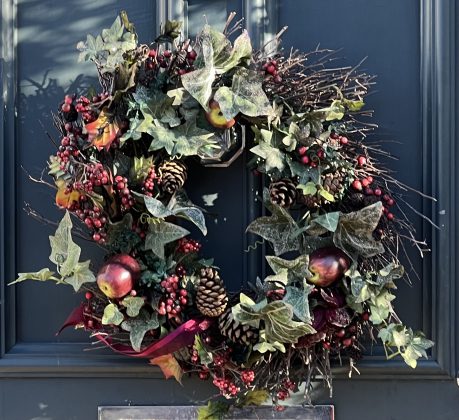
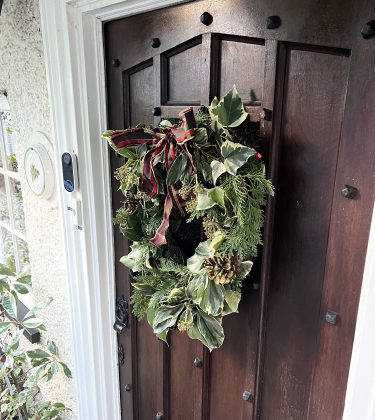
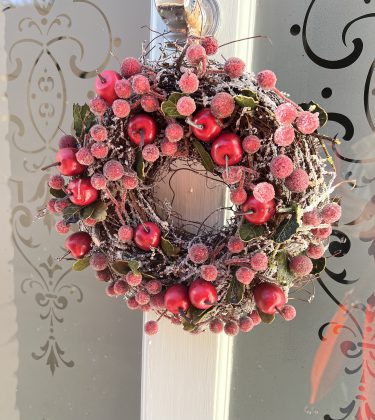
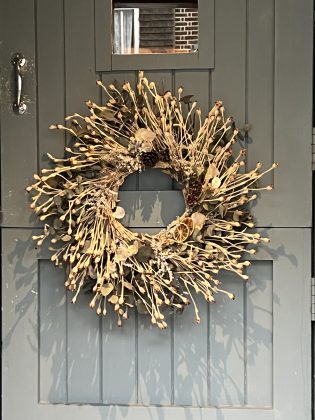
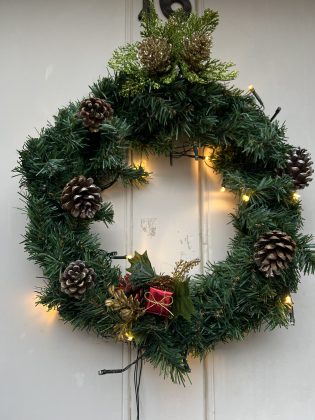
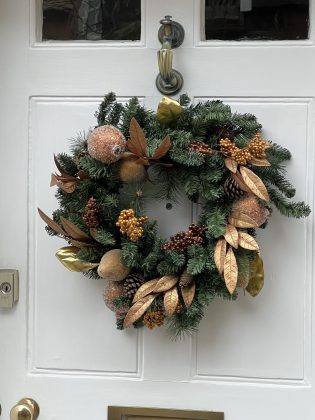
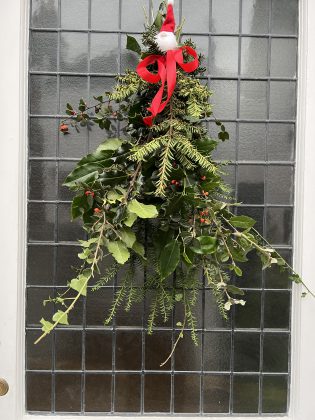
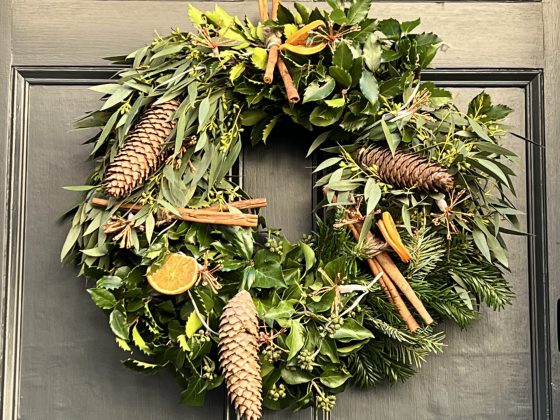
Some of those are fantastic – especially loving the tied bunches rather than wreaths for a slightly different look